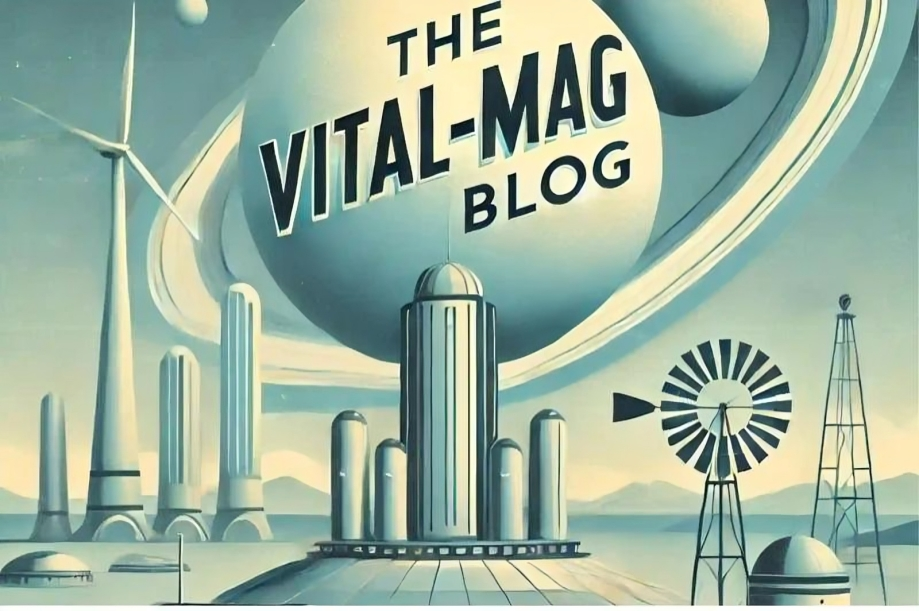Welcome to the wild world of Clickbaitosaurus, where headlines are as eye-catching as they are misleading. This prehistoric creature of the digital age has evolved from simple attention-grabbing phrases into a complex beast that shapes our online experience. With just one click, it promises drama, intrigue, and even shock — often leading us down a rabbit hole we didn’t anticipate.
As content creators scramble to keep up with an ever-distracted audience, clickbait tactics have transformed how stories are told in the vast landscape of the internet. But what is behind this phenomenon? How did Clickbaitosaurus emerge from ancient media practices only to dominate today’s online space? Join us on this fascinating journey through time and psychology as we explore its impact on modern publishing and discover smarter ways to craft engaging titles without falling prey to sensationalism.
The origins of clickbait and its early forms in traditional media
Clickbait didn’t start in the digital age. Its roots can be traced back to traditional media, where sensationalism thrived. Newspapers of yesteryear often featured eye-catching headlines designed to grab attention and sell copies.
Think about it—those outrageous stories would lure readers in with promises of scandal or shock. “You won’t believe what happened next!” was a common thread that echoed through print publications long before internet algorithms took over.
Television also played its part, using dramatic teasers to keep viewers hooked between commercial breaks. The goal was simple: maximize audience engagement and ratings.
As technology evolved, so did these tactics. What once required paper and ink transformed into clicks and metrics, but the essence remained unchanged—captivating an audience by stirring curiosity or emotion remains a timeless strategy across all forms of media.
The rise of clickbait in the digital era and its impact on online publishing
The digital era transformed how we consume content. With the explosion of social media and online platforms, clickbait became a familiar sight on our screens.
Publishers quickly realized that catchy headlines could drive significant traffic. The allure of sensational titles drew readers in, promising everything from shocking revelations to secrets unveiled. This led to a surge in content designed more for clicks than depth.
Traditional journalistic values took a backseat as engagement metrics reigned supreme. Quality often suffered under the weight of attention-grabbing tactics. Readers found themselves sifting through mountains of superficial articles, struggling to find substance amidst the noise.
As competition intensified, many outlets leaned heavily into this model, prioritizing virality over integrity. The impact was profound—shaping not only reader expectations but also influencing how stories were told across various platforms.
The psychology behind clickbait headlines and why they work
Clickbait headlines tap into deep-seated psychological triggers. They play on curiosity, prompting readers to click out of a desire to know more. This urge is often irresistible; people hate feeling left in the dark.
Additionally, many titles evoke emotions such as shock or excitement. By framing content in a way that sparks strong feelings, clickbait can create an immediate connection with potential readers.
Another factor is the fear of missing out (FOMO). Headlines that suggest exclusive information make users feel they must engage now to stay relevant and informed.
Moreover, surprising statements or outrageous claims stimulate our cognitive biases. We are drawn to things that challenge our beliefs or offer unexpected insights.
This blend of curiosity, emotion, FOMO, and surprise makes clickbait an effective tool for grabbing attention in today’s crowded digital landscape.
The dangers of relying on clickbait tactics for engagement and revenue
Clickbait strategies can lead to short-term gains, but the long-term consequences often outweigh the benefits. When readers feel misled by sensational headlines, trust erodes quickly. This loss of credibility is hard to recover.
Additionally, constant reliance on clickbait creates an unsustainable cycle. Publishers may find themselves resorting to increasingly outrageous claims just to grab attention. Over time, this not only dilutes brand identity but also alienates a loyal audience.
Engagement metrics might look impressive at first glance, but they don’t always translate into meaningful interactions or conversions. Readers drawn in by flashy titles may bounce immediately if content fails to deliver substance.
Platforms and algorithms are evolving. They prioritize quality over quantity now more than ever. Sustainable growth comes from building relationships with your audience—not through deceptive tactics that ultimately backfire.
How to create compelling titles without resorting to clickbait
Crafting compelling titles doesn’t have to involve clickbait tactics. Start by being clear and informative. A straightforward title that reflects the content can attract genuine interest.
Use numbers or lists when applicable. Titles like “5 Tips for Better Writing” offer clarity while piquing curiosity without misleading readers.
Incorporate powerful verbs to convey action and excitement. Instead of vague terms, choose words that evoke emotion or urgency, drawing readers in naturally.
Ask questions if relevant—this engages your audience’s curiosity directly. For instance, “Are You Making These Common Mistakes?” invites introspection.
Prioritize authenticity over sensationalism. People appreciate honesty and value when they feel a connection with your content from the very start. Engaging titles should promise what’s delivered inside—no tricks needed!
Conclusion
The journey of Clickbaitosaurus through the landscape of online content is a fascinating tale. It reflects our collective desires, struggles for attention, and the ongoing evolution of media. From its fossilized roots in traditional print to its digital dominance today, clickbait has transformed how we consume information.
Understanding the psychology behind these engaging headlines reveals why they work so effectively. They tap into human curiosity and drive clicks like never before. Yet, this allure comes with significant risks—misleading tactics can damage trust and tarnish reputations.
Creating compelling titles doesn’t have to mean sacrificing integrity or resorting to deception. By focusing on authenticity and value-driven content, writers can craft headlines that attract genuine engagement without falling into the clickbait trap.
As we continue navigating this digital age, finding a balance between eye-catching titles and honest communication remains crucial for sustainable success in online publishing. The legacy of Clickbaitosaurus isn’t just about clicks; it’s about fostering meaningful connections with audiences while respecting their intelligence and time.










